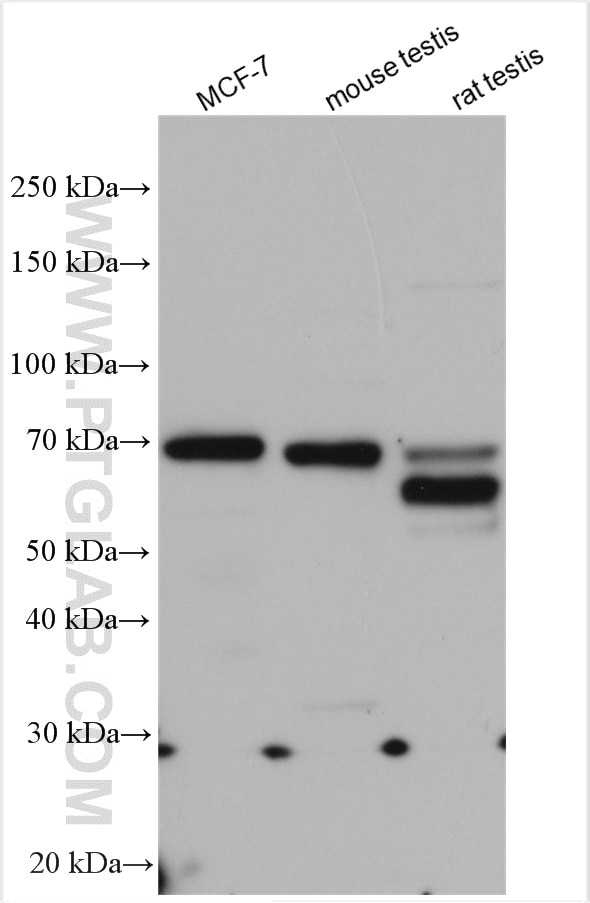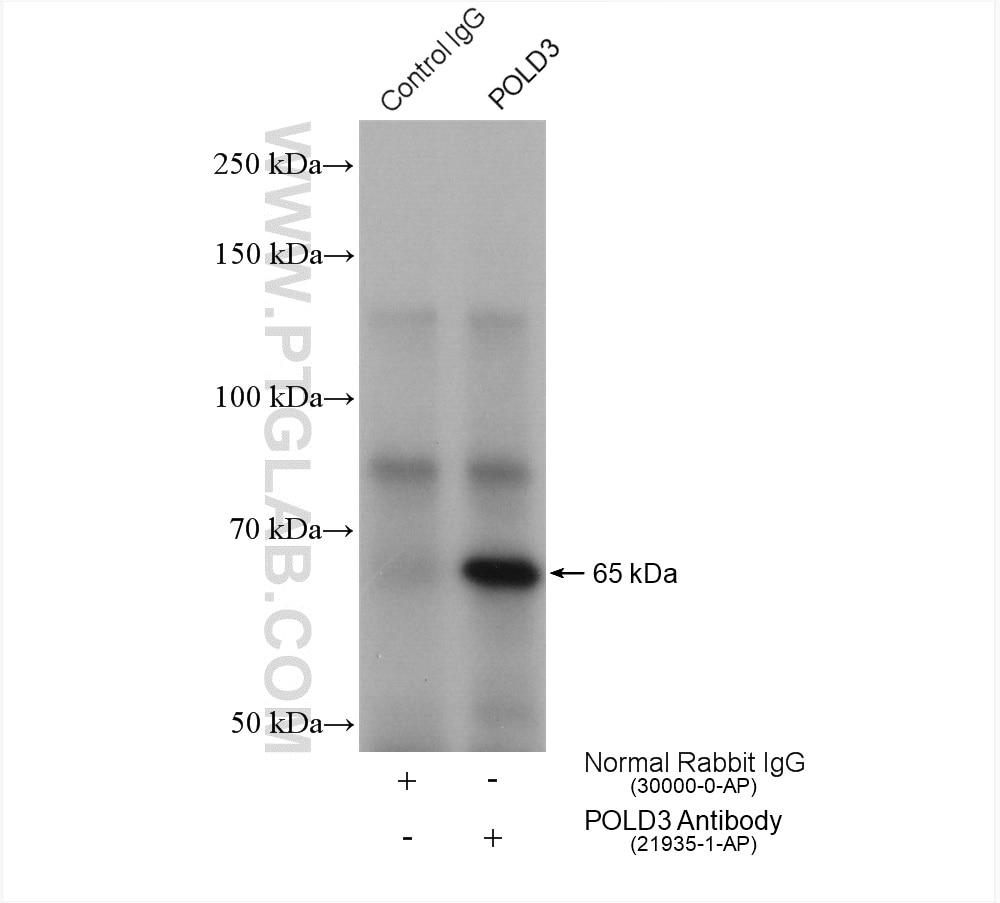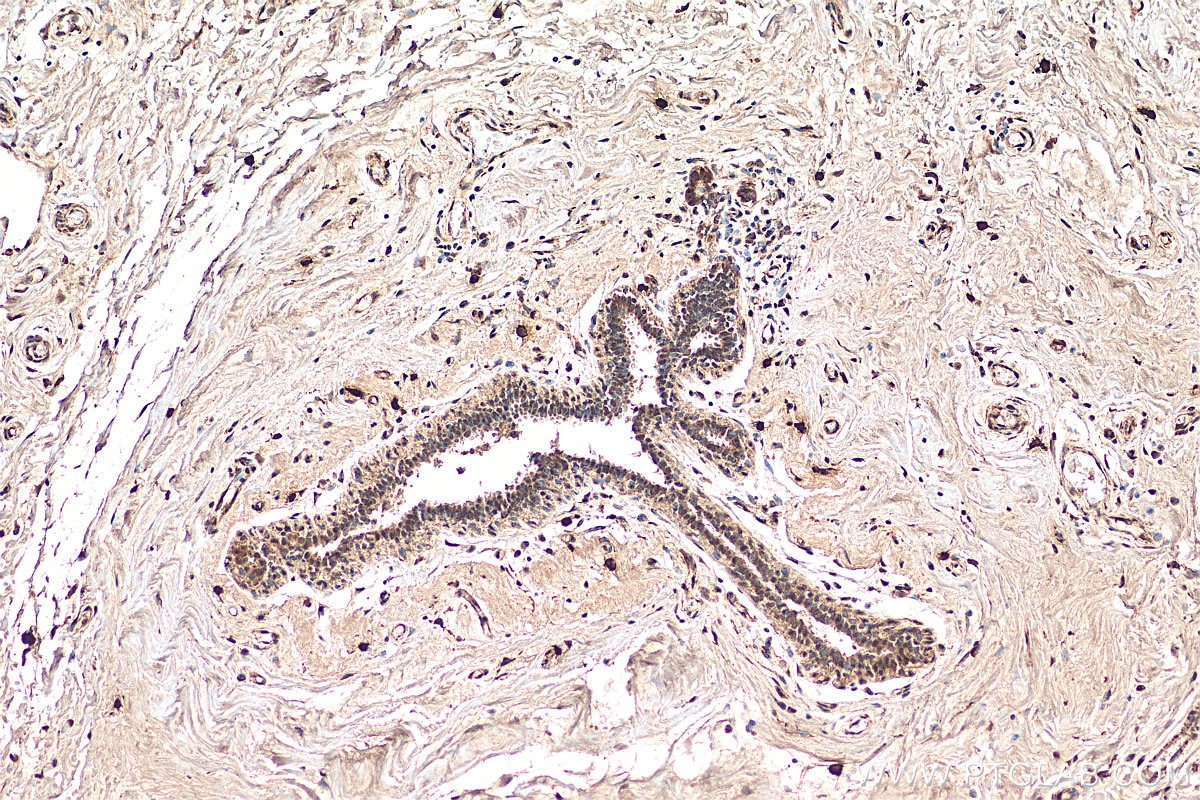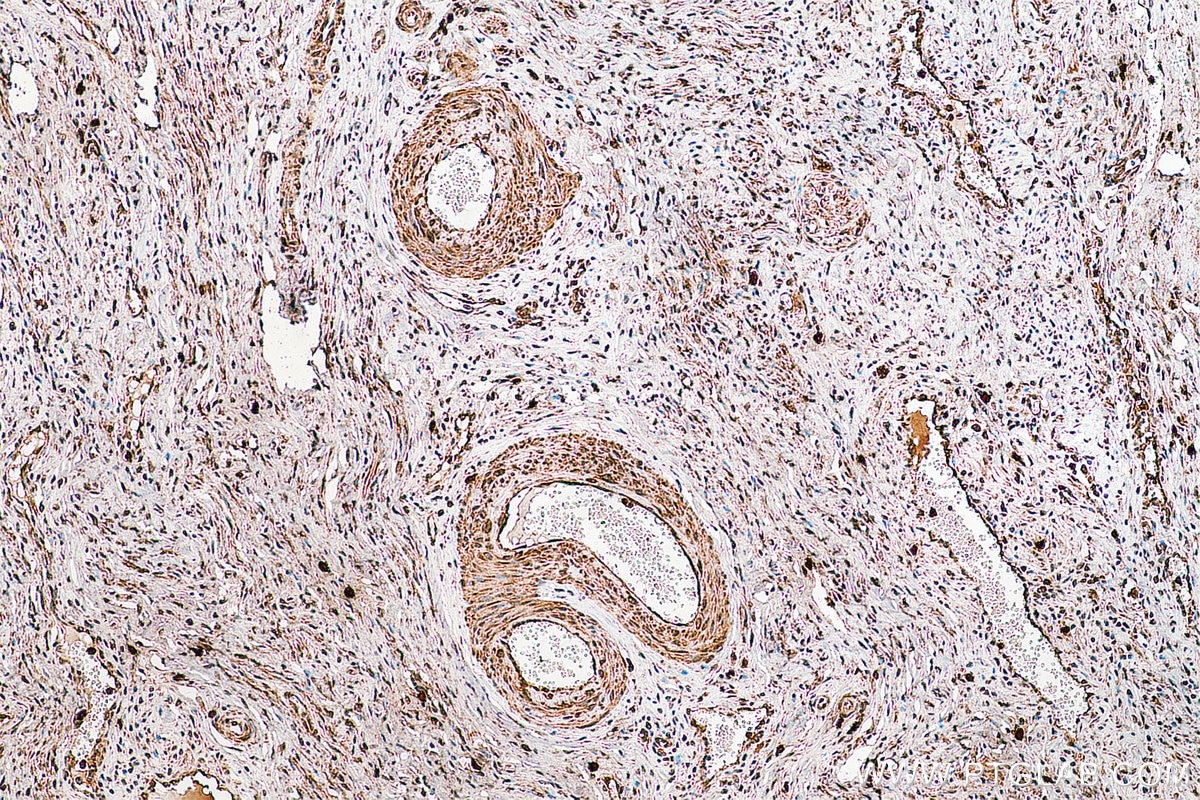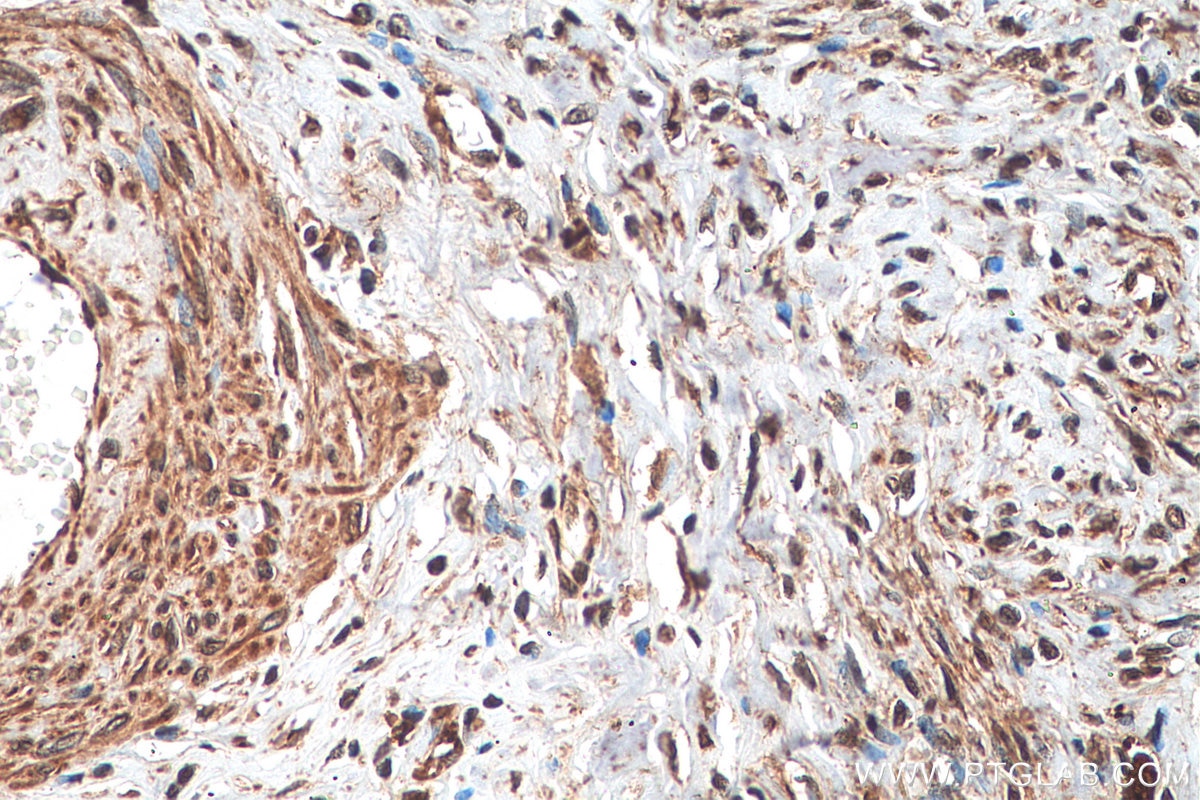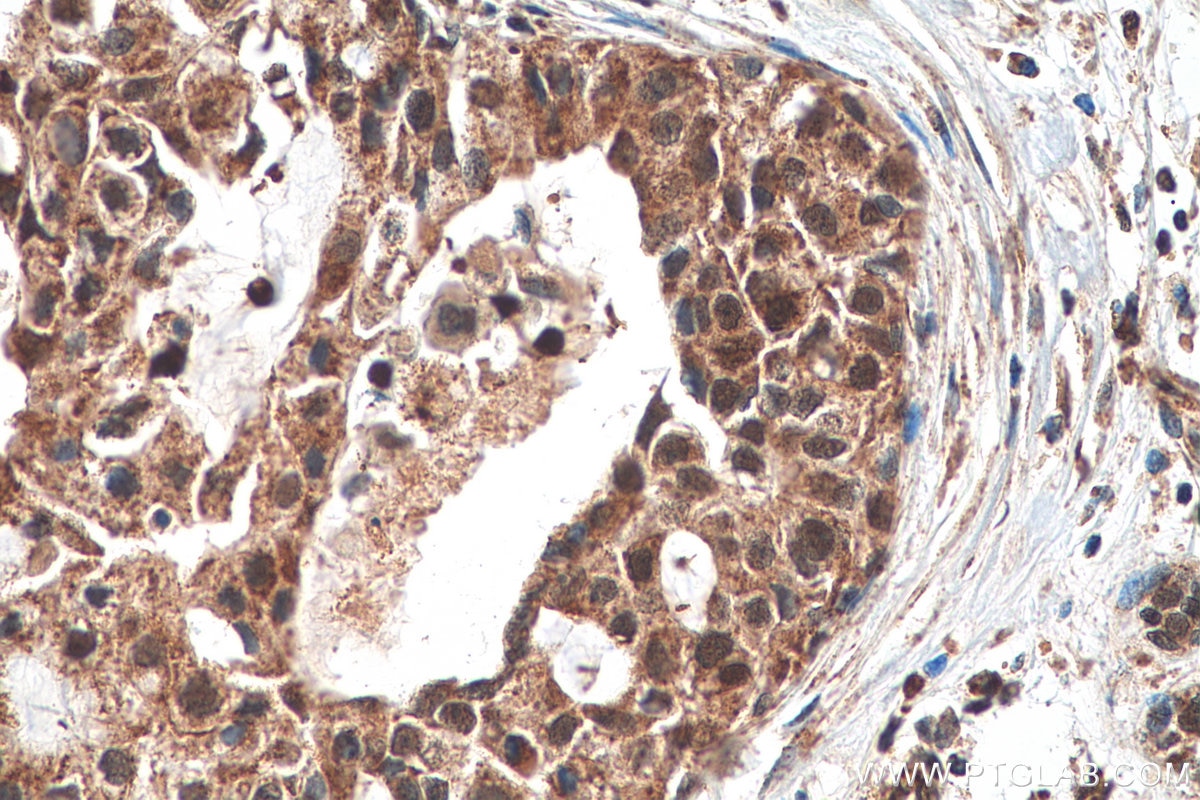Tested Applications
| Positive WB detected in | MCF-7 cells, mouse testis tissue, rat testis tissue |
| Positive IP detected in | MCF-7 cells |
| Positive IHC detected in | human breast cancer tissue, human cervical cancer tissue Note: suggested antigen retrieval with TE buffer pH 9.0; (*) Alternatively, antigen retrieval may be performed with citrate buffer pH 6.0 |
Recommended dilution
| Application | Dilution |
|---|---|
| Western Blot (WB) | WB : 1:500-1:2000 |
| Immunoprecipitation (IP) | IP : 0.5-4.0 ug for 1.0-3.0 mg of total protein lysate |
| Immunohistochemistry (IHC) | IHC : 1:50-1:500 |
| It is recommended that this reagent should be titrated in each testing system to obtain optimal results. | |
| Sample-dependent, Check data in validation data gallery. | |
Published Applications
| KD/KO | See 2 publications below |
| WB | See 6 publications below |
| IF | See 1 publications below |
Product Information
21935-1-AP targets POLD3 in WB, IHC, IF, IP, ELISA applications and shows reactivity with human, mouse, rat samples.
| Tested Reactivity | human, mouse, rat |
| Cited Reactivity | human, mouse |
| Host / Isotype | Rabbit / IgG |
| Class | Polyclonal |
| Type | Antibody |
| Immunogen |
CatNo: Ag16570 Product name: Recombinant human POLD3 protein Source: e coli.-derived, PET28a Tag: 6*His Domain: 1-360 aa of BC108908 Sequence: MLKDSGPLFNTDYDILKSNLQNCSKFSAIQCAAAVPRAPAESSSSSKKFEQSHLHMSSETQANNELTTNGHGPPASKQVSQQPKGIMGMFASKAAAKTQETNKETKTEAKEVTNASAAGNKAPGKGNMMSNFFGKAAMNKFKVNLDSEQAVKEEKIVEQPTVSVTEPKLATPAGLKKSSKKAEPVKVLQKEKKRGKRVALSDDETKETENMRKKRRRIKLPESDSSEDEVFPDSPGAYEAESPSPPPPPSPPLEPVPKTEPEPPSVKSSSGENKRKRKRVLKSKTYLDGEGCIVTEKVYESESCTDSEEELNMKTSSVHRPPAMTVKKEPREERKGPKKGTAALGKANRQVSITGFFQRK Predict reactive species |
| Full Name | polymerase (DNA-directed), delta 3, accessory subunit |
| Calculated Molecular Weight | 466 aa, 51 kDa |
| Observed Molecular Weight | 51-70 kDa |
| GenBank Accession Number | BC108908 |
| Gene Symbol | POLD3 |
| Gene ID (NCBI) | 10714 |
| RRID | AB_2878949 |
| Conjugate | Unconjugated |
| Form | Liquid |
| Purification Method | Antigen affinity purification |
| UNIPROT ID | Q15054 |
| Storage Buffer | PBS with 0.02% sodium azide and 50% glycerol, pH 7.3. |
| Storage Conditions | Store at -20°C. Stable for one year after shipment. Aliquoting is unnecessary for -20oC storage. 20ul sizes contain 0.1% BSA. |
Protocols
| Product Specific Protocols | |
|---|---|
| IHC protocol for POLD3 antibody 21935-1-AP | Download protocol |
| IP protocol for POLD3 antibody 21935-1-AP | Download protocol |
| WB protocol for POLD3 antibody 21935-1-AP | Download protocol |
| Standard Protocols | |
|---|---|
| Click here to view our Standard Protocols |
Publications
| Species | Application | Title |
|---|---|---|
Nucleic Acids Res Disruption of G-quadruplex dynamicity by BRCA2 abrogation instigates phase separation and break-induced replication at telomeres | ||
Genes Dev TRF1 uses a noncanonical function of TFIIH to promote telomere replication
| ||
Nucleic Acids Res Somatic and intergenerational G4C2 hexanucleotide repeat instability in a human C9orf72 knock-in mouse model | ||
bioRxiv Distinct mechanisms underlying extrachromosomal telomere DNA generation in ALT cancers |

